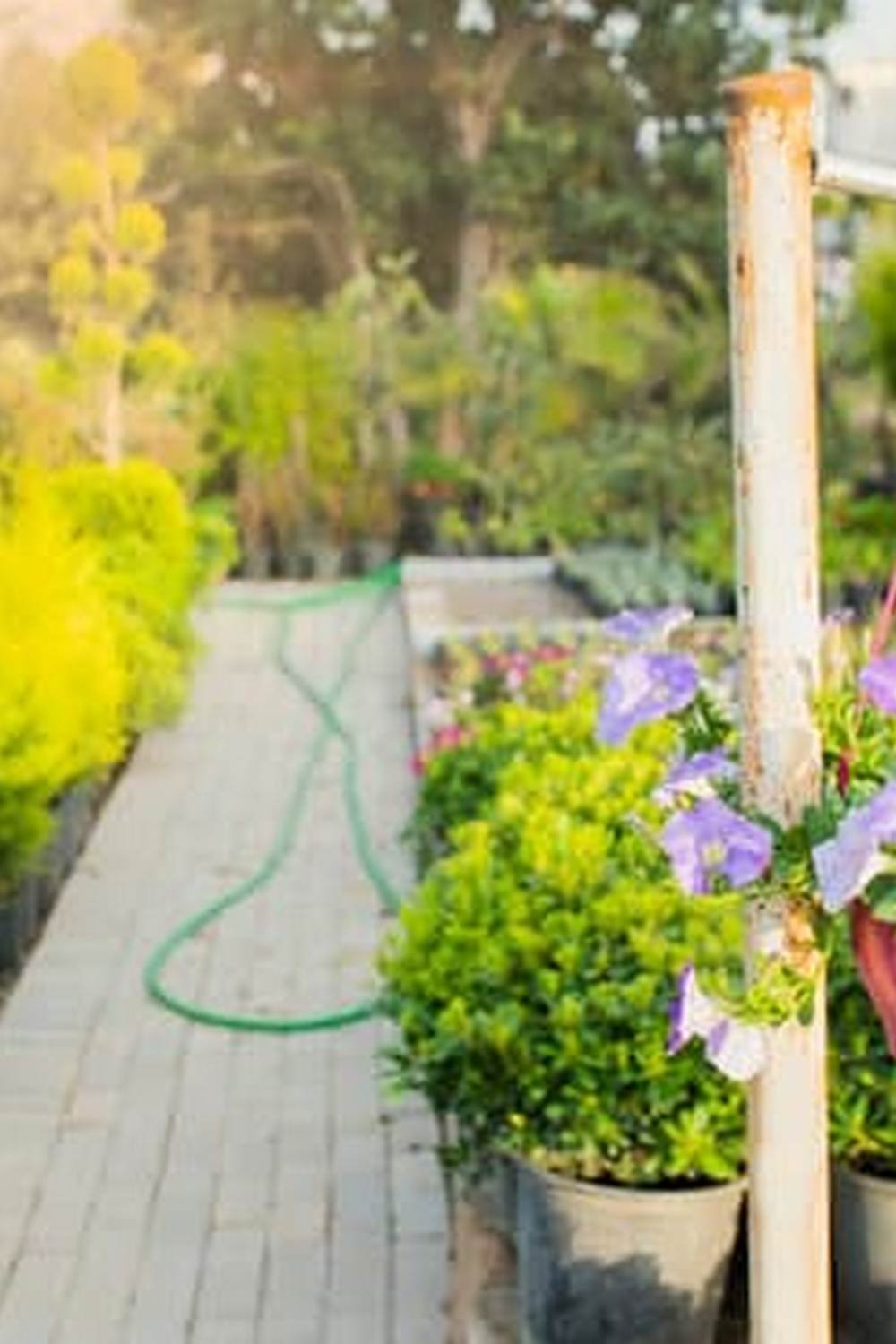Vegetable gardens around the world have long been cherished for their beauty, sustainability, and contribution to local food sources. In recent times, the importance of vegetable gardening has been further emphasized by the global pandemic, leading to a surge in interest and participation. As individuals seek ways to become more self-sufficient and connect with nature, vegetable gardens have emerged as a popular solution.
From ancient civilizations to modern urban settings, vegetable gardens hold a significant place in various cultures and societies. The historical significance of these gardens dates back centuries, with iconic examples such as the legendary Hanging Gardens of Babylon showcasing humanity’s enduring fascination with cultivating edible plants. Each culture has its unique approach to vegetable gardening, influenced by traditions, geography, and climate.
Exploring vegetable gardens around the world reveals a diverse array of styles and techniques tailored to suit different environments. Climate and location play a crucial role in shaping the design and crops grown in these gardens. Whether it’s the quaint charm of traditional English cottage gardens or the innovative use of space in modern rooftop gardens, each setting offers insights into how creativity and resourcefulness are applied to sustainable food production.
Historical Significance
Vegetable gardens have a rich historical significance that dates back to ancient cultures around the world. From the Hanging Gardens of Babylon to the terraced gardens of Machu Picchu, agriculture and vegetable cultivation have played a crucial role in human civilization. Each culture has its own unique practices and traditions when it comes to growing vegetables, reflecting their connection to the land and nature.
In ancient China, vegetable gardens were not only sources of food but also symbols of harmony and balance with nature. The Chinese tradition of Feng Shui influenced the layout and design of these gardens, emphasizing the importance of water features and plant placements for good energy flow. Similarly, in medieval Europe, monasteries often had extensive vegetable gardens where monks cultivated a wide variety of crops for sustenance and medicinal purposes.
The historical significance of vegetable gardens can also be seen in iconic landmarks such as Thomas Jefferson’s Monticello plantation in Virginia, where he experimented with new crop varieties and planting techniques. These historic vegetable gardens serve as testaments to human ingenuity and our enduring relationship with the land. Today, many heritage sites around the world preserve and promote traditional vegetable gardening practices as part of their cultural heritage.
Unique Features of Vegetable Gardens Around the World
Vegetable gardening has a long history in various cultures around the world, each with its unique features and designs influenced by climate and location. In countries with temperate climates like England, traditional English cottage gardens are popular, characterized by a mix of flowers, herbs, and vegetables grown closely together in a quaint and charming manner.
On the other hand, in urban areas where space is limited, modern rooftop gardens have become increasingly popular for their innovative use of vertical space to grow a variety of vegetables.
One fascinating aspect of vegetable gardens around the world is how different regions adapt their gardening practices to suit their environment. For example, in arid regions like the Middle East, vegetable gardens rely heavily on efficient irrigation systems such as drip irrigation to conserve water. In tropical regions like Southeast Asia, vegetable gardens flourish with diverse crops like bananas, taro root, and lemongrass due to the favorable climate.
Furthermore, vegetable gardens are not just about growing produce; they also serve as spaces for relaxation and contemplation. In Japan, for instance, traditional vegetable gardens known as niwa-teien are designed as peaceful retreats that combine beauty with functionality. These gardens feature meticulously pruned trees and shrubs along with carefully tended vegetable plots, creating a harmonious environment that reflects Japanese aesthetics and culture.
| Climate | Unique Features |
|---|---|
| Temperate | Traditional English cottage gardens with mixed plantings |
| Arid | Efficient drip irrigation systems for water conservation |
| Tropical | Diverse crops such as taro root and lemongrass in Southeast Asia |
Famous Vegetable Gardens
Royal Botanic Gardens, Kew, England
One of the most renowned vegetable gardens in the world is located at the Royal Botanic Gardens in Kew, England. Spanning over 300 acres, these gardens are not only a UNESCO World Heritage Site but also serve as a hub for botanical research and conservation efforts.
Visitors to the Royal Botanic Gardens can explore an array of vegetables and herbs meticulously grown in the impressive walled garden, showcasing both traditional and exotic varieties. The expert horticulturists at Kew constantly experiment with new techniques and plants, making it a must-visit destination for any vegetable gardening enthusiast.
Jardin Des Plantes, Paris, France
In the heart of Paris lies the Jardin des Plantes, a historic botanical garden dating back to 1626. Besides its extensive collection of flowers and trees, the Jardin des Plantes boasts a remarkable vegetable garden that highlights French gardening traditions and techniques.
From colorful heirloom tomatoes to fragrant herbs like lavender and rosemary, this vegetable garden showcases the bounty of French cuisine in its most natural form. Visitors can stroll through the meticulously arranged plots while learning about sustainable gardening practices that prioritize soil health and biodiversity.
Techniques and Plants Used in Famous Vegetable Gardens
The techniques employed in famous vegetable gardens around the world are as diverse as their plant collections. From traditional hand-tending methods passed down through generations to cutting-edge innovations in hydroponic systems, each garden has its unique approach to cultivating bountiful harvests.
In addition to common vegetables like tomatoes, cucumbers, and carrots, many famous vegetable gardens also feature rare or unusual plants that add intrigue and educational value for visitors. These gardeners often focus on organic practices that promote soil fertility and reduce environmental impact – inspiring enthusiasts to adopt sustainable gardening methods in their own vegetable gardens around the world.
Sustainable Practices in Vegetable Gardening
Vegetable gardens around the world play a crucial role not only in providing fresh produce but also in promoting sustainability and environmental consciousness. One of the key sustainable practices in vegetable gardening is composting.
By using kitchen scraps, yard waste, and other organic materials to create nutrient-rich compost, gardeners can reduce their reliance on chemical fertilizers and promote healthy soil ecosystems. Additionally, rainwater harvesting is another important sustainable practice that allows gardeners to conserve water resources by collecting and storing rainwater for irrigation purposes.
Incorporating natural pest control methods is essential for maintaining a balanced ecosystem within vegetable gardens. Instead of resorting to synthetic pesticides that can harm beneficial insects and wildlife, many gardeners opt for companion planting, which involves growing certain plants together to deter pests naturally. Furthermore, encouraging biodiversity through the use of native plants and creating habitat areas for beneficial insects like ladybugs and lacewings can help control pest populations without the need for harmful chemicals.
| Key Sustainable Practices | Benefits |
|---|---|
| Composting | Reduces reliance on chemical fertilizers and promotes healthy soil ecosystems |
| Rainwater Harvesting | Conserves water resources and provides natural irrigation for vegetable gardens |
| Natural Pest Control Methods | Promotes biodiversity and reduces the need for synthetic pesticides, benefiting ecosystem health |
By implementing these sustainable practices in vegetable gardening, individuals can contribute to environmental conservation efforts while enjoying the bountiful harvests from their gardens. Sharing success stories and case studies of sustainable vegetable gardens not only inspires others to follow suit but also showcases the positive impact these eco-friendly practices can have on both local communities and the planet as a whole.
As more people recognize the importance of sustainability in agriculture, the future of vegetable gardens around the world looks promising with a continued focus on environmentally responsible practices.
Cultural Significance of Vegetable Gardens
Vegetable gardening holds immense cultural significance around the world, deeply rooted in traditions and rituals that have been passed down through generations. From Asia to Europe to Africa, different cultures have unique ways of celebrating the art of cultivating their own vegetable gardens. In many countries, vegetable gardens are not only a source of food but also a symbol of heritage and community bonding.
In Japan, for example, the practice of “Wabikusa” involves creating miniature vegetable gardens indoors as a form of meditation and connection with nature. The meticulous care and attention to detail in these gardens reflect the Japanese values of harmony and balance. Similarly, in Italy, home to some of the world’s finest vegetable gardens, growing vegetables is a way of preserving culinary traditions and honoring local produce in dishes like pasta primavera or caponata.
Harvest festivals are another common cultural tradition associated with vegetable gardening around the world. In India, communities come together during festivals like Pongal or Onam to celebrate the bountiful harvest from their vegetable gardens. These festivities not only showcase the abundance of fresh produce but also serve as a reminder of gratitude towards nature and the hard work put into nurturing vegetable gardens throughout the year.
Future Trends in Vegetable Gardening
As vegetable gardening continues to gain popularity worldwide, future trends in this practice are becoming more innovative and sustainable. One of the emerging trends is the rise of vertical gardens, especially in urban areas where space is limited.
Vertical gardening allows for more efficient use of space, making it ideal for smaller yards or even indoor spaces. With the implementation of vertical gardening systems like hydroponics and aeroponics, individuals can grow a variety of vegetables without the need for traditional soil beds.
Technology is also playing a significant role in shaping the future of vegetable gardening. The development of gardening apps and smart devices has made it easier for gardeners to monitor their crops, track growth patterns, and receive real-time notifications about plant care. These technological advancements not only enhance the gardening experience but also help individuals optimize their crop yields and resource usage.
Looking ahead, the trend toward sustainability in vegetable gardening is likely to continue growing. More gardeners are embracing eco-friendly practices such as composting, rainwater harvesting, and natural pest control methods to reduce their environmental impact.
By incorporating these sustainable practices into vegetable gardens around the world, individuals can contribute to a healthier planet while enjoying fresh, homegrown produce. As we move forward, it’s clear that vegetable gardens will play a vital role in promoting sustainability and self-sufficiency in communities globally.
How to Start Your Own Vegetable Garden
Starting your own vegetable garden can be a rewarding and fulfilling experience. Whether you have a large backyard or just a small balcony, anyone can start growing their own fresh produce. Here are some practical tips and advice for beginners looking to start their own vegetable garden:
- Choose the right location: Select a spot in your yard or balcony that receives at least 6 hours of sunlight per day. Make sure the area has good drainage to prevent waterlogging.
- Determine what to grow: Consider the climate and seasonality of where you live when choosing which vegetables to plant. Start with easy-to-grow crops such as tomatoes, lettuce, and peppers.
- Prepare the soil: Ensure your soil is well-draining, nutrient-rich, and free from weeds. You can improve the soil quality by adding compost or organic matter.
Once you have these basics covered, it’s time to start planting your vegetable garden. Remember to water regularly, monitor for pests and diseases, and harvest your crops at the right time for optimal flavor. Additionally, there are plenty of resources available for further learning and inspiration on vegetable gardening around the world.
By starting your own vegetable garden, you not only get to enjoy fresh and flavorful produce but also contribute to sustainability by reducing food miles and packaging waste. Joining the global movement of vegetable gardens around the world allows you to connect with nature, promote healthy eating habits, and take pride in cultivating your own food. So roll up your sleeves and get ready to experience the joy of growing your own vegetables.
Conclusion
In conclusion, vegetable gardens around the world hold a significant place in both history and modern society. The surge in popularity of vegetable gardening, especially during the pandemic, highlights the importance of self-sustainability and the joy of growing one’s own fresh produce. From the ancient Hanging Gardens of Babylon to the contemporary rooftop gardens in bustling cities, vegetable gardens have evolved to adapt to different climates and cultural practices.
Furthermore, sustainable practices in vegetable gardening play a crucial role in preserving our environment and resources. Techniques such as composting, rainwater harvesting, and natural pest control methods not only benefit the garden but also contribute to a healthier ecosystem. By learning from successful sustainable vegetable gardens worldwide, we can strive for more environmentally friendly practices in our own gardening endeavors.
As we look towards the future of vegetable gardening, it is clear that innovation and technology will continue to shape this age-old practice. Vertical gardens and hydroponic systems are on the rise, offering new possibilities for urban dwellers with limited space. With the aid of modern apps for garden planning and monitoring, aspiring gardeners can embark on their own journey to cultivate thriving vegetable gardens.
In essence, vegetable gardens transcend cultural boundaries and offer a universal connection to nature and nourishment. So why not start your own vegetable garden today and join millions around the world in embracing this rewarding pursuit? Let’s sow the seeds of creativity and sustainability together in our very own patch of green paradise.
Frequently Asked Questions
What Country Is Best for Gardening?
The best country for gardening depends on various factors such as climate, soil quality, and available resources. However, countries like the United States, England, and Australia are known for their favorable conditions for gardening.
What Are the 3 Most Popular Vegetables Grown in the Home Garden in the USA?
In the USA, the three most popular vegetables grown in home gardens are tomatoes, peppers, and cucumbers. These vegetables are not only easy to grow but also versatile in their culinary uses, making them a staple in many American households.
Which Location Is Best for Growing Vegetables?
The best location for growing vegetables is an area that receives plenty of sunlight, has well-drained soil rich in nutrients, and is protected from strong winds. Additionally, choosing a location with access to water for irrigation is essential for successful vegetable cultivation.

If you’re looking to get into vegetable gardening, or are just looking for some tips on how to make your current garden better, then you’ve come to the right place! My name is Ethel and I have been gardening for years. In this blog, I’m going to share with you some of my best tips on how to create a successful vegetable garden.





